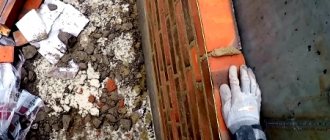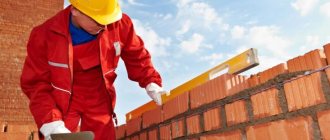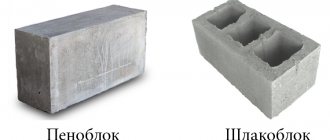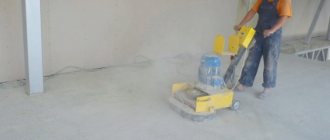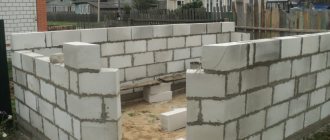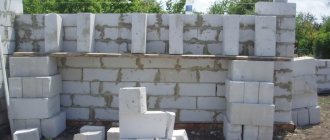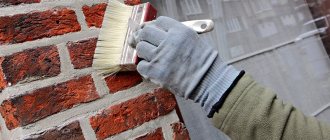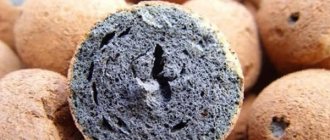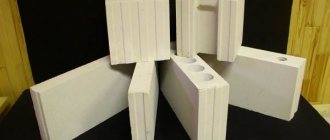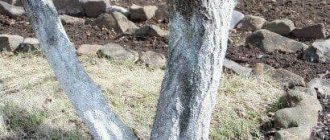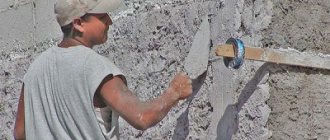At all times, people keep traditions, value what is time-tested and shrouded in the fog of history.
Bavaria is home to many ancient traditions. The world is especially familiar with the famous Bavarian brick and Bavarian masonry. In appearance, Bavarian brick cannot be confused with any other facing brick. The exquisite multi-colored facades laid out by him seem to send us back to the past, but at the same time they surprise us every time with their novelty and originality. What is Bavarian brick? This is a reduced ceramic brick produced using flash firing technology. At the first stages, the technology of its production is not much different from the usual one. But there are several fundamental differences in the firing process. At the final stage of firing, while maintaining a high temperature in the furnace, the air supply is suspended, while combustion continues. The carbon entering the furnace chamber with fuel interacts with the metal oxides contained in the clay, due to which the brick acquires shades from dark red to blue-black. The result is a strong, reliable brick with a unique play of colors.
The reduced brick obtained in this way has a number of advantages:
- Durable glazed surface. The thickness of the outer layer of brick is 3-4 mm, making it very strong. This brick retains its color and strength throughout the entire period of operation.
- Durability. In addition to weather resistance, brick is not afraid of abrasion, temperature changes, and can withstand any wind loads. If the installation technology is followed, a facade made of such bricks can last several hundred years!
- Resistance to mechanical damage. The brick easily withstands light impacts from a heavy object, and the glass surface does not leave scratches or traces of impacts.
- No efflorescence. The unique flash firing technology prevents efflorescence from appearing on the surface of the product due to the impenetrable glazed surface.
- Unique, attractive design. Each brick has its own unique shade, which creates its own original style. At the same time, all shades have natural colors, which harmoniously fits the structure built from it into the natural landscape.
- The low level of water absorption ensures reliable adhesion of the brick to the masonry mortar. It will not absorb excess moisture, thereby reducing the strength of the solution. And also, this moisture will not contribute to the destruction of the brick when it freezes.
- Absolutely environmentally friendly. Reduced brick is harmless to both the environment and human health.
- Excellent heat and sound insulation performance. Finishing the facade of your house with ceramic bricks processed using flash firing technology improves heat and sound insulation and reduces the need to use additional insulating material.
- Fire resistance. This type of brick is characterized by increased fire resistance due to processing in an oven at high temperatures.
The variety of reduced bricks is due not only to the shades of the color scheme, but also to the decorative texture of the product.
A forced necessity that has turned into a unique style
The emergence of this masonry method, like most successful inventions, became possible thanks to the forced necessity that most builders of the Middle Ages faced.
At that time, brick production technology did not allow obtaining the same color for several batches. As a result, each of them had its own shade, which forced Bavarian builders to constantly mix bricks of different colors during the laying process in order to obtain a more uniform color scheme. The end result exceeded all expectations.
Over time, this method became traditional in Germany and is known as “Bavarian masonry”. The ability to create an individual shade for any building every time has become widespread. This is not least due to the wide range of colors that can be obtained in modern conditions.
Information from history.
The Bavarian style originated in southern Germany at the end of the 16th century. Brick production technologies of that time did not allow the production of products that were uniform in color and shape. Bricks produced by hand molding turned out to be non-uniform in color. German craftsmen learned how to beautifully mix bricks from different batches, creating unique color combinations. Subsequently, this gave rise to a new style that has gained enormous popularity in our time. It is worth noting that Bavarian masonry is not only the brick itself, but also the masonry technology itself. Traditionally, masonry was carried out with lime mortar, thick seams were used, since the geometry of the brick was not ideal. Accordingly, this style is characterized by a thick white seam and uniform color mixing.
Bavarian brick and Bavarian masonry are found not only in Bavaria. This style spread to many regions of Europe. It is also found in Ukraine, Russia, Belarus, and the Baltic states.
Features of the Bavarian style
The essence of Bavarian masonry is quite simple. Several bricks of different colors or shades are mixed in almost random order. But, like any other, the Bavarian style has its own peculiarities. These include:
- mandatory laying of bricks of different shades next to each other;
- their uniform location over the entire plane without the predominance of one color;
- constant change of pattern, avoidance of repetitions;
- matching vertical seam across a row of bricks.
The minimum number of colors, which is mandatory for the classic Bavarian style, is four. This is a combination of brown and red colors and their two shades (black-brown and dark red). But more can be used, usually no more than eight or nine.
Areas of use
Bavarian masonry is widely used for finishing work when cladding not only the facade or walls of a house, but also for any brick structures: columns, pools, bridges and paths. It is also popular for interior work, such as building a fireplace.
Using this method provides several advantages:
- finished buildings have an unusual appearance;
- surfaces do not require additional processing;
- always fits organically into any interior;
- emphasize the individuality of the owner.
Laying methods
There are two ways to use a style such as Bavarian masonry:
- arbitrary arrangement of bricks on a plane;
- use of a pre-prepared sketch.
In the first case, the first row is laid horizontally, including bricks of all shades. In the next row, they alternate in the same order, observing the above features. The coincidence of the vertical seam across the row must be checked.
In the second, installation is carried out in accordance with the prepared sketch. To do this, several rectangular fragments are first created, containing different combinations of colors and arrangement of bricks. Their number can vary from four to ten. After this, they are distributed over the working surface.
This Bavarian masonry (the arrangement of bricks of different colors requires certain skills and good imagination) looks much more impressive than the usual mixing of shades, but also takes more time.
Choosing bricks for Bavarian masonry
The supply of ceramic bricks from factories in the Samara region is, as a rule, limited to 3 colors: red, beige, brown. With their help you can make a decent monochromatic facade, but they are unsuitable for Bavarian masonry. Clinker brick is suitable for this, but then facing the facade will cost a significant amount. An excellent option for making Bavarian masonry in Samara and the Samara region is hyperpressed brick produced in Tolyatti. This brick with the texture of crushed stone is produced in 12 colors and 22 sizes - with a chipped front surface, end, etc., which opens up scope for the creativity of architects and designers. With its help, you can create either a classic facade in red-brown tones, using the colors “pomegranate”, “chocolate”, “terracotta”, “cocoa”, or an original one, using blue, gray, green and olive colors. The pictures below show diagrams of Bavarian masonry made of hyper-pressed brick
:
Options for combining traditional and Bavarian style
In addition to the classic installation methods, it is quite common to use two cladding options simultaneously that decorate any home: Bavarian masonry and two-color. In this option, the walls can be clad in one color and the corners in another, using the main style for most of the surface.
To focus attention on individual elements, you can use a brick of only one of the colors used. These could be window and door openings, corners of the house or any other elements. The use of this technique creates an additional effect, emphasizing the individuality of the entire building.
Features of modern “Bavarian masonry”
Today, in private construction, “Bavarian masonry” is again gaining popularity and a special brick is already used as a facing material, when you buy it you immediately receive several colors in the batch in equal proportions. Experts have already taken care of the combination of shades and the correct proportions. Depending on your preferences, you can choose a combination of different shades of the same color, or a combination of contrasting colors. In any case, such cladding will become exclusive.
The modern market offers not only classic collections consisting of 4 colors, but also two-color and multi-color (up to 8 colors and shades). You can experiment with both the color of the bricks and the color of the masonry mortar. In this case, the same set will “play” differently with light or dark seams.
Some of the leading places in Russia in the production of such bricks are occupied by the BRAER, Slavyansky, Golitsynsky and Stary Oskolsky factories (Recke brand).
Use in other areas
The distinctive appearance has led to the widespread use of the Bavarian style in landscape design. A variety of color combinations allow you to make each object unique and memorable.
The ability to combine materials of different color shades is widely used not only in bricklaying, but also in other construction works. The most common ones include laying tiles both outside and inside the house, and installing parquet boards, which often involves a combination of elements of different shades.
What is Bavarian masonry and its history?
How to achieve a uniform color of the facade when laying bricks? NO way if there are no kilns with large capacity and uniform firing, and also if clay formulation technologies are not strictly followed.
200 years ago it was not possible to burn enough bricks to fill one house. Therefore, the products were used from different batches, where the degree of firing could differ. The facades of such products looked heterogeneous. Monochromatic vertical and horizontal stripes appeared.
But it was in Bavaria that this disadvantage was turned into an advantage, laying out different shades of bricks in the form of a mosaic with maintaining the distances between the tones. People began to like this solution. Masonry began to be used outside of Bavaria. Subsequently, it received the name “BAVARIAN MASONRY”.
BAVARIAN MASONRY
– these are 2-3 basic shades of facing bricks with the addition of 1 or 2 different colors.
Currently, Bavarian masonry is used in elite buildings. Why? It’s just that such masonry stands out effectively against the background of plain facades. But its cost is higher than usual due to the complexity of implementation. Below is an object from RUSDC facing brick BRAER Bavarian masonry, oak bark
With the growing popularity of this masonry, German brick manufacturers have a line called “Bavarian masonry”. Over the course of 150 years, it has been constantly improved. Adjustments were made to colors, textures and quality was improved.
Subsequently, these centuries-old traditions were inherited by Russian facing bricks, produced using German technologies.
Types of bricks and requirements
The production of bricks for Bavarian masonry is established in most countries of the world, primarily in Germany. The technological process allows us to obtain a product of the highest quality and unusual shade. Obtaining a variety of colors is achieved by changing the amount of air supplied to the firing chamber, without the use of any dyes.
Today bricks with a smooth and textured surface are produced. The main prerequisite is the same brick shape.
There are two well-known factories in Russia for the production of bricks for Bavarian masonry:
- "Braer";
- "Fifth Element".
Basic rules of Bavarian masonry.
When you first look at the façade, made in the Bavarian style, the first thing that catches your eye is that the bricks of different tones are arranged in a chaotic order: there is neither a clear repeating pattern nor individual color accents. It is due to this that the characteristic visual effect arises. To achieve it and get beautiful classic Bavarian masonry, you need to follow the following rules:
- bricks of the same color should not touch
- There should not be a predominance of any one color in any area, as well as dark, light, bright tones
- the alternation of elements should be chaotic, without a system and periodic repetitions
- the proportional ratio of colors must be maintained throughout the entire masonry
- in cladding it is most preferable to use from 3 to 6 shades. But no more than 9. The more shades, the more interesting and natural the overall background looks, but the more difficult it is to draw up a diagram
- one tone should be chosen as the base one - it will dominate and determine the mood of the entire color palette
- You should not use repeating fragments - you should strive to create the impression of a natural mixture of tones. How this happens in nature
It is worth noting that of all the brands of facing brick used to create “Bavarian masonry” facades, only TM KS-Keramik’s brick has three front sides and one conventionally front side, the back side. This allows for face (on both sides) half-brick masonry. Traditionally, facing masonry is laid with a spoon outwards. In this case, the elements in each row are shifted by half a brick, and the vertical seams are repeated through the row. In this case, they are arranged in a checkerboard pattern. But this is not the only possible option for Bavarian masonry; everything here is limited by the designer’s imagination. You can, for example, lay by poking (although this is not the most economical option) or alternate rows laid out with a spoon and poking alternately. Recently, masonry has become popular, in which one or more spoon bricks are alternated in the same row with bond bricks.
As we have already said, the “Bavarian masonry” facing brick has two working sides. The traditional version of cladding involves laying it with a spoon facing outwards. In this case, the elements in each row are shifted by half a brick. In this case, it turns out that they are arranged in a checkerboard pattern. But this is not the only possible option for Bavarian masonry: the imagination of designers is not limited by anything. You can, for example, make a design using only the short sides (although this is not the most economical solution) or alternate rows laid out with a poke and a spoon. The most important thing in working with Bavarian masonry is to correctly draw up a diagram of the arrangement of elements. The installation process itself is standard and does not cause much difficulty. Anyone who has had to deal with brick can cope with this task.
Bavarian masonry can be used as the main self-supporting face layer of a brick wall, and can also be mounted on a supporting structure made of another material. In this case, additional insulation is required, which is attached to the main load-bearing wall.
Brick
The plant is located next to one of the most famous clay deposits in the Tula region and specializes in the production of facing bricks. It has become widely known as a manufacturer of high-quality products. Today it can be argued that brick, Bavarian masonry and excellent results are inseparable concepts.
The brick is available in two versions:
- corrugated, also known as “oak bark”, giving the building an antique effect;
- smooth, with a flat surface.
Reasons for the leadership of BRAER facing bricks in the Bavarian masonry line
It is impossible to produce a Mercedes in a garage. Requires modern technological equipment. The same is true for the production of lined bricks. In order to obtain products equal in quality to German brands, the Russian BRAER plant was fully equipped with German equipment. It is not for nothing that in 2011 the plant received the title of the most innovative enterprise in Europe from the Association of Ceramic Materials Manufacturers!
In addition, the name BRAER has German roots. This was the name of the German Braer dynasty, known for several generations of skilled engineers and brickmakers.
The plant is located in the Tula region, 2 km from the Obidim clay deposit, which is the main raw material of the enterprise. The BRAER plant is the leader in Russia in terms of sales volumes of Bavarian masonry facing bricks. Leadership is due to 2 reasons:
GEOMETRY OF BRAER FACING BRICKS
For Bavarian masonry, the geometry of the bricks is important. Still, they are used from different batches, so there may be a difference of several mm in height, width, and length. The smaller it is, the faster and smoother the mason carries out the masonry.
From batch to batch, BRAER facing bricks have a perfectly even geometry. Why?
- A homogeneous clay composition is used, which is controlled in the laboratory before the production of each batch. This allows the products to shrink evenly when drying.
- At the molding stage, high-precision German equipment is used to cut raw products.
- Between the drying chamber and the oven, the product is heated in a heater to 160 C. This reduces the percentage of defects, preventing uneven shrinkage during firing in the oven. Not every brick factory has a heater!
- After leaving the oven, the dimensions of the finished products are checked for dimensional deviations by laser.
The plant is modern and the largest in Russia for the production of ceramic products, including bricks, and is located in the Kaliningrad region. The range includes more than 20 products.
Gained fame in Russia and European countries as a manufacturer of high quality bricks. The product “Bavarian masonry” (or flash brick 1 NF) has high technological characteristics, a wide range of colors and complies with the standards accepted in European countries.
